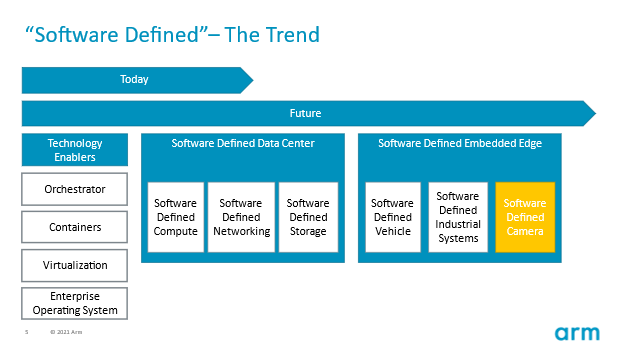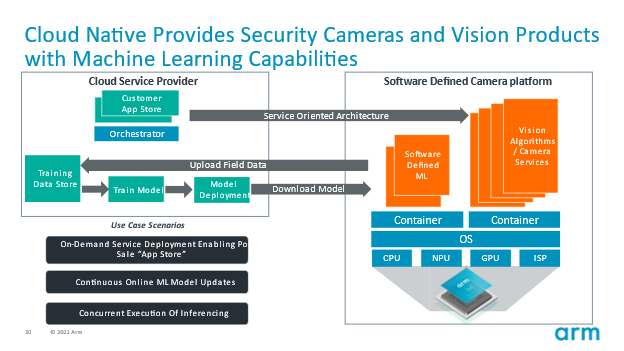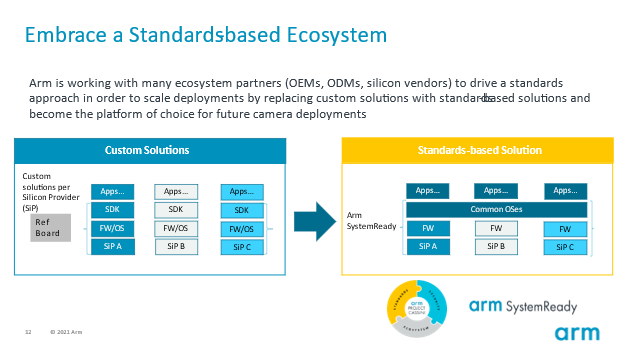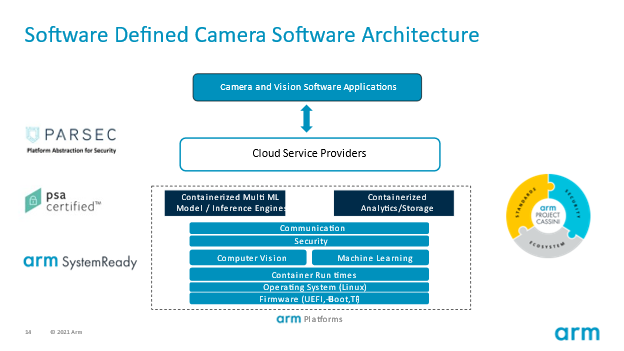...
Security Cameras are seeing increasing growth in all the subsegments such as commercial surveillance cameras, consumer surveillance cameras and in many other devices such as dashcams, baby monitors and other IoT vision devices. The total surveillance market is expected to be around $44B in the year 2025 growing at a CAGR of 13%. The other exciting part in this market along with the increase in the unit shipments of the surveillance cameras is the increasing use of artificial intelligence and machine learning in these cameras and IoT devices. It is estimated that there are already a billion cameras installed in the world and this number would reach 2 billion by the year 2024. However security cameras are very different from many other devices because once installed, they stay installed for more than 5+ years. So it is critical to ensure that these devices continue to provide enhanced functionality over time.
In today’s world, there are many technologies that are “Software defined”. This has been possible because of many advancements in technology – at the bottom of the stack, you have the Operating system, then the virtualization layer – which actually kicked of the original software defined compute with Virtual machines etc. Then came containers and then the orchestrators for the containers such as k8s, k3s - these technological advancements paved the path to define a software defined data center. In the datacenter, after software defined compute, software defined networking and software defined storage started to become norm. Now the time is prime to move software defined trend to the edge devices as well. This is really a transformation that has started across many segments such as Automotive – cars, trucks etc. We do see this trend applied to many other edge devices and one of them would be cameras or as we and many others call it as Smart Cameras. The idea here is that once you buy a camera, the hardware is advanced so that you will be receiving continuous software updates which can be neural network model updates catered to the specific data that you might have captured using the camera or other updates related to functionality and security of the device.
By designing future camera products with cloud native capabilities in mind, one will be able to scale camera and vision products to unprecedented levels.If all the applications are deployed using a service oriented architecture with containers, a device can be continuously updated. One of the key advantages of this architecture would be to enable new use case scenarios that one might not have envisioned in the past with a simple on demand service deployment post sale through an app store. A simple example can be to deploy a new and updated license plate recognition app a year after the purchase of cameras. At the same time one of the other key advantages with this architecture would be to enable continuous machine learning model updates based on the data pertinent to the camera installations i.e be able to use the data that it is capturing and use it to train the models. With this, the model would be relevant to the specific use-case thus increasing the value of the camera itself. All of this is possible due to enabling a service oriented architecture model using containers and thinking cloud native first.
The other important aspect that will really bring together the security camera and vision products is the adherence to common standards at the silicon and the platform level. Arm has started an initiative called Project Cassini and Arm SystemReady® is a key component of this initiative. As part of Arm SystemReady®, Arm is working with many ecosystem partners (OEMs, ODMs, silicon vendors) to drive a standards approach in order to scale deployments by replacing custom solutions with standards-based solutions and becoming the platform of choice for future camera deployments.
So we at Arm would like to provide a reference solution for future software defined cameras based on standards with focus on security, machine learning, imaging and cloud-native. The basis of the reference solution is a SystemReady® platform. SystemReady® platforms implement UEFi, U-Boot and Trusted Firmware based on specific standards. With the base software layers compliant to SystemReady®, standard linux distros such as Ubuntu, Yocto can be run on these platforms. Then the layer above would be a container orchestration layer to be able to run containerized applications, by using k3S. Then the layer above would be the Machine learning and Computer vision libraries. Arm has been providing support for machine learning through Arm-NN and Arm Compute library so that customers can develop their ML applications using standard ML frameworks such as PyTorch, Tensorflow etc. Similarly on the computer vision side, it is critical to support open standards such as Video 4 Linux, OpenCV and BLAS libraries. Now moving up the stack is security – this is where the example reference design will use PARSEC, which is an open source platform abstraction layer for security along with PSA certification process so that you know that the product will be secure when deployed in the field. The layer above would also provide containerized applications for inferencing, analytics and storage. Then on the top layer would be to provide the connectivity to the cloud with the capability to run camera and vision software applications, be able to take care of all the edge services etc.
...



